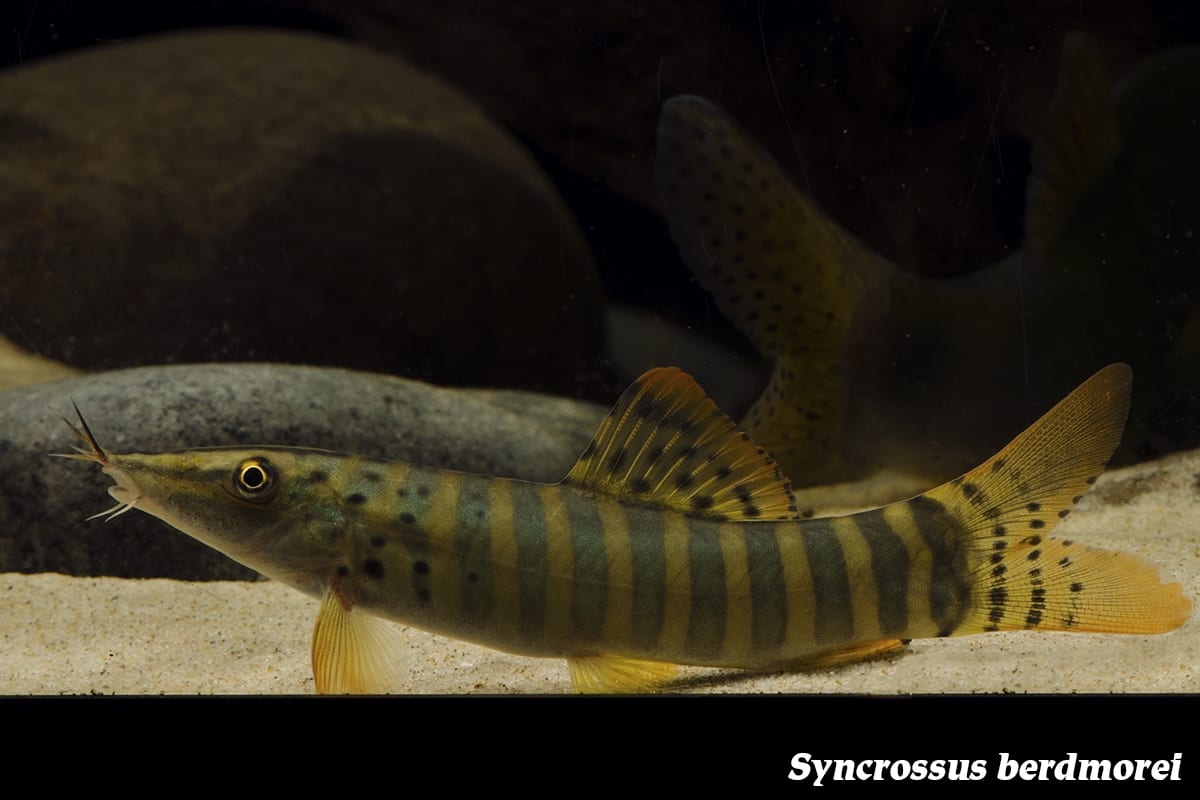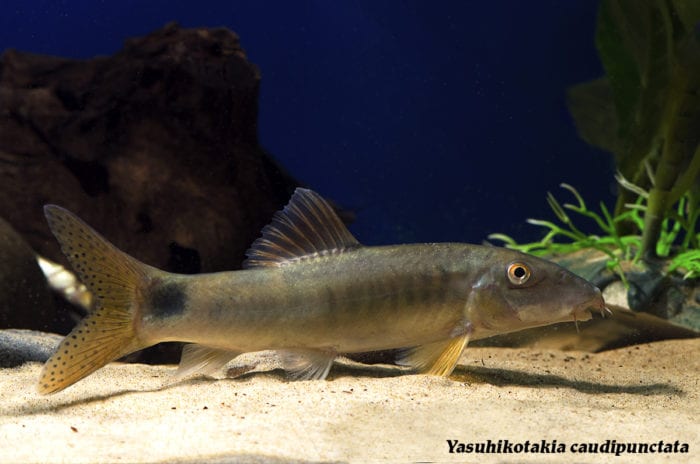Naive Melody
Naive Melody
Choosing to live a life as an explorer, taxonomist, or biologist is a deeply romantic path that one wouldn’t choose in pursuit of wealth or fame, but rather in search of truth and discovery. Of course, the best contributors become immortalized in the building blocks of scientific history, but even more powerful, is the opportunity to have an organism bearing your name survive your own physical form. In honor of some major ichthyological contributors, this week we’ll discuss aquarium favorites bearing names of the greats: Syncrossus berdmorei, Yasuhikotakia caudipunctata, and Pao (Formerly Tetraodon) baileyi.
Discovered by English zoologist and taxonomy powerhouse Edward Blyth in 1860, S. berdmorei bears a common name in his honor, “Blyth’s Loach”. Reaching a max of 9 inches in length, Blyth’s Loaches are long and narrow in body with vertical dark banding interspersed with small black spots down their bodies. Originally described in the Tenasserim provinces between Myanmar and Thailand, this species is thought to be endemic throughout the Irrawaddy, Salween, and Sittaung rivers of Myanmar. Showing a preference for well-oxygenated headwaters, this loach is ideal for river biotope setups. Tanks should be furnished with sandy substrate, driftwood, leaf litter, scattered water-worn rocks, and low lighting. A large and active loach, they easily intimidate smaller species, but can be kept peacefully alongside larger Cyprinids and boisterous active fish that inhabit higher spaces in the water column. Mostly carnivorous by nature, they should be fed high-quality sinking foods with regular supplementation of live and frozen fare, and infrequent additions of vegetal matter. Sensitive to waste, tank waters should be pristine with weekly to biweekly water changes of at least one third. Temperatures should be kept between 70 and 78°F, pH around neutral, and hardness of 90 to 268 ppm.

Scientific Name:
Syncrossus berdmorei
Common Name:
Blyth’s Loach
Temperature:
/ pH70-78°F / ~ 7.0 pH
Native Location:
Myanmar (Burma)
Preferred Diet:
Live and frozen meaty foods
Blyth’s Loach
Named (along with other members of its genus) after Japanese researcher and collector Yasuhiko Taki, Y. caudipunctata was described in 1996 from the Mekong River drainage in Laos. Reaching 5 inches in length, these loaches have light bodies with light pink and black marbling, and yellowy, spotted fins. A riverine dweller, these “Spot Tail Loaches” do best in clear, well-oxygenated, flowing waters with rocks and sand. In captivity, these botiids require sandy or smooth gravel substrate with scattered, water-worn rocks, driftwood roots and branches, low lighting, and hardy plants that don’t require high light and aren’t easily dug up.
Boisterous in temperament, Spotted Tail Loaches do well alongside pelagic Cyprinids, and can even coexist peacefully alongside other riverine bottom dwellers like Garra, Botia, and Syncrossus. A gregarious species, they should be kept in conspecific groups of at least 5, and will form complex social hierarchies when kept in groups of 10 or more. Another mostly carnivorous generalist, they should be fed varied diets of high-quality sinking pellets, live and frozen fare, and some plant matter. Tank waters should be maintained with temperatures of 73 to 84°F, pH between 6.0 and 7.5, and hardness around 18 to 215 ppm.

Scientific Name:
Yasuhikotakia caudipunctata
Common Name:
Spot Tail Loach
Temperature:
/ pH73-84°F / 6.0 to 7.5 pH
Native Location:
Mekong River drainage, Laos
Preferred Diet:
Live and frozen meaty foods
Scientific Name:
Pao baileyi
Common Name:
Hairy Pufferfish
Temperature:
/ pH74-81°F / ~ 7.0 pH
Native Location:
Thailand and Laos
Preferred Diet:
Invertebrates, live fare
Hairy Pufferfish
Professor and Curator of Fishes at the University of Michigan Museum of Zoology, Reeve M. Bailey’s legacy is carried on (after his own 100 years of life!), by P. baileyi. Known more commonly as “Hairy Puffers”, these aquarium favorites reach at least 5 inches and exhibit mottled brown bodies. Males are covered in hair-like cirri, while females are smooth. Found in rocky areas of large rivers throughout Thailand and Laos, these puffers do best in tank setups with water flow from pumps and powerheads and sandy substrate littered with variably-sized, water-worn rocks arranged to form hiding spots. Known as an aggressive and intolerant species willing to use their sharp beak-of-a-mouth to tear tank mates apart, they should be maintained alone as a single specimen. Carnivorous by nature, the proper use of their beaks is to break open shellfish, and in captivity they should be fed invertebrates like snails, worms, crab legs and mussels. Tank waters are best kept with temperatures of 74 to 81°F, pH hovering in the vicinity of neutral, and hardness between 90 and 214 ppm.
While some may consider following career paths similar to these fish-world heroes naive, even rock stars can appreciate the sentiment. As David Byrne would say “Never for money, always for love”.
